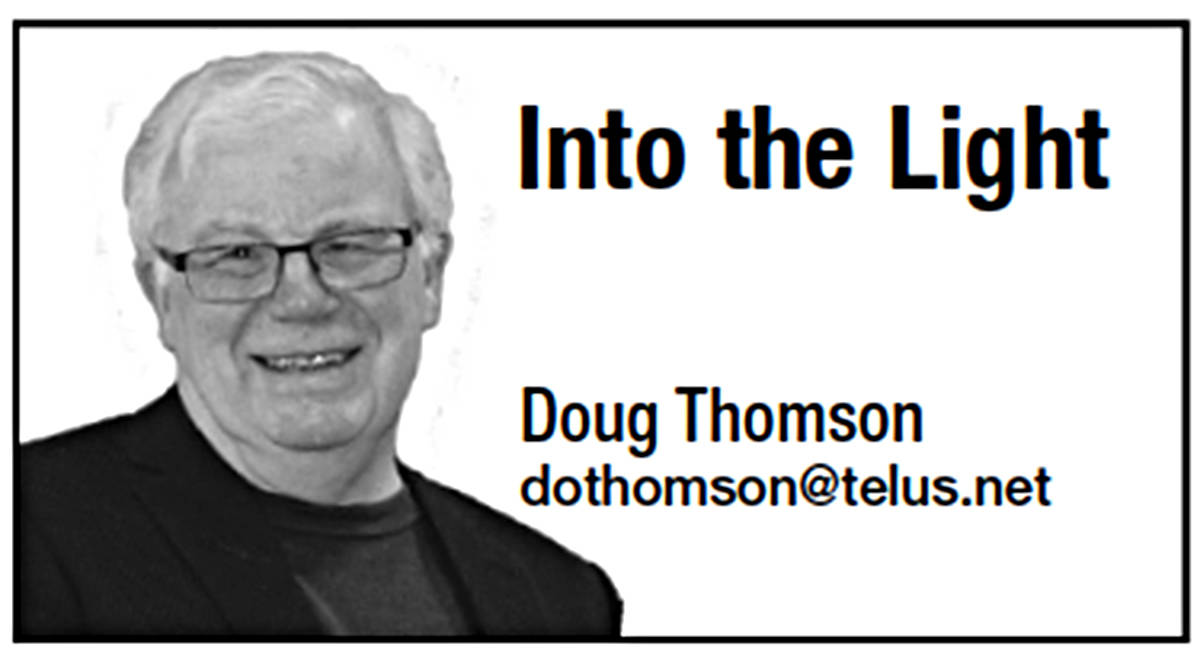Every generation decries its progeny out of hand. It’s the old, “I used to walk 14 miles to school in -40-degree weather, wearing old shoes stuffed with newspapers and did it carrying firewood for the school stove. Today’s kids don’t know anything about life.” Really.
Thanks to the amazing accuracy and ubiquity of Google Maps, I am able to report that I walked exactly 2.3 km to school and 2.3 km home again. Check it yourself: 49 West St. Paul St, Kamloops to Kamloops High (now S. Thompson Secondary - why school districts feel they have to mess with the perfectly good names of schools is beyond me).
I did it carrying my binders and tenor saxophone and I did it every day – no bus, no dad driving. Hardly 14 miles and no firewood, but it was a trek considering I was wearing ridiculous Boulet cowboy boots that were de rigueur among that generation of Kamloopsian boys.
Slick leather soles in the Kamloops winters meant tobogganing on the icy sidewalks and enduring frozen, soaked feet, just two downsides of a decade of nightmare footwear that were designed to convert five little toes into one big one - a podiatrist’s nightmare.
But, hey, it was about a costume, rebellion and teenage whatever – what’s a little pain? These cultural signatures are part and parcel of every generation, and among all cultures, are a force that cannot be constrained regardless of the controls attempted by the most angst-ridden, helicopter parents or draconian regimes. Change will happen, even in North Korea.
Cultural and generational change are greatly assisted by technological change and that indeed may be one of my generation’s legitimate concerns.
We are in the midst of a communications revolution so unlike anything that has preceded it that it beggars description.
It is largely unconstrained by any cultural mores and norms and is so pervasive that we can’t hope to grasp its scope, let alone its implications.
We can trace the evolution of communication technology over millennia from voice and drum, to signal fires and semaphores; the feats of the first Marathon runner, Pheidippides, to messenger services like the Pony Express that were, in turn, displaced by the telegraph and telephone; radio and television brought immediacy; and then, the cell phone and the internet displaced all of the above.
All the innovations were game changers in their own right, but the cell phone and the internet blew the doors open in a big way and did it before we could possibly adapt as a social network (pun intended).
During my teenage years our cultural data sources were given form through late night listening to CFUN in Vancouver (using our 8 Transistor radios hidden under our pillows); magazines like Rolling Stone, Mad, Cracked, Seventeen, Tiger Beat and Teen (some for boys, some for girls); whatever the newsreels of the day advertised before the movies, and trendy gossip we gleaned from college kids and wanderers.
The knowledge imparted was slow in appearing, often contradictory, always incomplete and typically inaccurate, but we ate it up. We were living in the age of Aquarius.
Of course, our parents got their news from many of the same sources and it scared them half to death. Radio and television were rife with dire tales predicting the end of society, an opinion that the likes of LSD guru, Timothy Leary, did little to quell.
Radio hosts, the news on television, politicians, religious leaders and propagandists of varied stripes opined that the youth of all Western nations were pretty much on a spiral path to hell. We weren’t.
So, I have to ask myself if I am not falling into the same trap of generational angst when looking at our current communications Wild West? Maybe, but maybe not.
This current communications revolution has proven to harbour a plethora of wonderful information sources, but also has spawned a “cyberwar”, pitting nation against nation. This war of deception and guile is not the domain of John LeCarré spooks, but of organized “trolls” who have the power to manipulate the beliefs of nations (a modern-day troll is a person whose sole purpose in life is to seek out people to argue with on the internet over extremely trivial issues).
Young boys no longer fantasize over the lingerie section of the Sears catalogue, but both boys and girls alike have ready access to the most prurient pornography available. The impact on our children is unclear, but the initial psychological studies on the subject are not encouraging.
Scams, fraud, bullying, victimization and hatred abound on the internet while the DarkNet is reported to be a haven for hardened criminals of all stripes.
There are few controls at any level on the internet and most of them are bandaid attempts to manage something that could not have been predicted when this digital universe was begun. Certainly, the likes of Mark Zuckerberg had no idea of what Facebook would become when he and four pals dreamed it up in a Harvard dorm.
Maybe the problems with Facebook today rest in the fact that its roots are the legacy of a “frat boy” psychology. Indeed its first iteration was shut down by the university and it was reported in the student paper as “completely improper” – some would argue it hasn’t changed a whole lot.
We are inextricably tied to this digital landscape now.
Short of Armageddon and some sort of post-apocalyptic future, we appear to be bound by and to it. We bank on it, shop on it, break-up on it, get married on it, use it to reinforce fragile egos, and are scammed on it.
It gives voice yet it extols lies. It is in many ways a metaphor of the human condition. It does, however, seem prudent that we consider the application of some very basic protections for our children, our bank accounts and our political systems.
As a libertarian experiment, the internet seems more than slightly flawed – but then again it was created by humans.
Sports news? Email the newsroom

